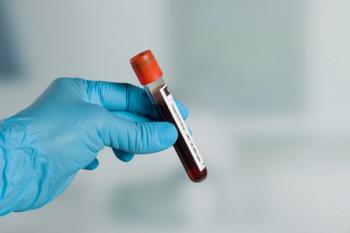
Pharmacy Practice in Focus: Oncology
- August 2020
- Volume 2
- Issue 4
Stability of Rare TP53 Comutations in Patients With AML
Key Takeaways
- TP53 and other gene comutations may influence genomic profiling and treatment strategies in AML through similar activation pathways.
- Next-generation sequencing (NGS) adoption has increased, enhancing the identification of TP53 and other gene mutations in AML patients.
Current advances in the analysis of the mutational status of different genes are providing investigators insights into new treatment pathways that can improve outcomes for patients.
A RECENT STUDY HAS demonstrated that TP53 and other gene comutations may act in similar activation pathways that result in rare detection when determining the genomic profile of patients with acute myeloid leukemia (AML). The results of the study were presented at the 2020 American Society of Clinical Oncology (ASCO) Virtual Scientific Program.1
For patients with AML, such a diagnosis can be devastating because of the disease’s poor overall survival rate. However, access to precision medicines is changing how health care teams approach treatment of AML. These medicines have been driving an increase in the use of next-generation sequencing (NGS), which helps providers ascertain the genomic profile of patients with AML. Additionally, the current advances in the analysis of the mutational status of different genes are providing investigators insights into new treatment pathways that can improve outcomes for patients.
In the study presented at ASCO, investigators assessed the rate of NGS adoption and TP53 mutation status for a cohort of 984 patients with AML using NGS testing from the Diaceutics diagnostic index during 2017-2019. Based on their assessment, the investigators determined the mutation rate of other genes on the same NGS panel that they used for TP53 status. They then compared the rates using the z test for the 2 population proportions while analyzing the stability of TP53 and comutation status at the time of diagnosis and relapse/refractoriness.
The investigators observed that the average routine clinical practice uptake of NGS doubled in a representative real-world patient cohort (third quarter [Q3] 2017, n = 144; Q3 2019, n = 290). Of 984 patients with AML, 151 presented with a TP53 mutation following NGS testing.
The investigators also observed significant negative associations with mutations in 7 other genes (ASXL1, P = .00308; CEBPA, P = .0027; FLT3, P < .00001; IDH1, P = .04338; NRAS, P = .0012; RUNX1, P = .01878; and TET2, P = .0251) in those patients with a TP53 mutation. However, between the diagnosis and relapse/refractoriness points, investigators observed no statistically significant differences in TP53 mutation and other gene mutation rates.
When assessing why TP53 and other gene comutations may act in similar activation pathways that result in rare detection in the determination of the genomic profile of patients with AML, the investigators explained that 1 possibility is that double mutants result in synthetic lethality that can lead to a potentially low clonal population. They added that when comutated clones avoid surveillance and regulation by the immune system, aggressive leukemias with lower overall survival can be a result.
With TP53 and comutation presenting as relatively stable during analysis, the investigators acknowledged the implications for testing algorithms and clinical utility as a potential marker of minimal residual disease. They also explained that although clinical trials may be difficult to conduct based on the low numbers of available patients for testing, a p53 antagonist and targeted therapy could be a valuable treatment option in the rare cases in which comutation does exist.
REFERENCE
- Bloom KJ, Idica A, Smart D, et al. Stability of rare TP53 co-mutations in AML patients. J Clin Oncol. 2020;38(suppl 15):7528. doi:10.1200/JCO.2020.38.15_suppl.752
Articles in this issue
over 5 years ago
Managing Oral Oncolytics During the COVID-19 Pandemicover 5 years ago
Brown Bag Consult®: Chemotherapy Recovery With Heart Problemsover 5 years ago
Apixaban: A New Treatment Option for Cancer-Associated VTEover 5 years ago
An Overview of CAR T-Cell Therapies and Adverse Effectsover 5 years ago
What Does Excellence in Oncology Pharmacy Look Like?over 5 years ago
Nano Drug Prospect Attacks Aggressive TNBC CellsNewsletter
Stay informed on drug updates, treatment guidelines, and pharmacy practice trends—subscribe to Pharmacy Times for weekly clinical insights.












































































































































































































